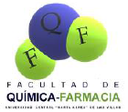Executive Secretary

VII Simposio Internacional de Química 2019
SIQ 2019
Resumen
Environmental pollution is one of the big problems in the world. The industrial development has enhanced the discharge to the environment of large quantities of chemical compounds with high toxicity and limited possibility of biodegradation. The use of enzymatic methods for remediation of polluted areas is a cost-effective and promising strategy. White rot fungi are the most efficient producers of oxidative extracellular enzymes with capacity to transform hazardous pollutants. The biotechnological potential of strains of genus Ganoderma remains underexplored. Torres-Farradá et al., (2017) determined the diversity of the genes coding ligninolytic enzymes of native strains of genus Ganoderma isolated in Cuba. However for a future biotechnological application, it is essential the determination of their stability to tolerate a wide range of abiotic conditions. The objective of this work was to characterize the crude enzyme extract produced by three Ganoderma strains with capacity to degrade xenobiotic compounds. The strains were cultured in SB-U medium and the crude enzymatic extracts were obtained after four days of incubation. The stability of the laccase enzyme was determined under several conditions of temperatures, pH and salinity. The results showed that laccase enzymes produced by all strains were stable for one week at basic and slightly acidic pH, temperature of 35 °C, and a range of salt concentrations (NaCl, Na2SO4, NaCO3) which makes possible the enzymatic treatment of industrial effluents and the bioremediation of ecosystems with these characteristics.
Abstract
Environmental pollution is one of the big problems in the world. The industrial development has enhanced the discharge to the environment of large quantities of chemical compounds with high toxicity and limited possibility of biodegradation. The use of enzymatic methods for remediation of polluted areas is a cost-effective and promising strategy. White rot fungi are the most efficient producers of oxidative extracellular enzymes with capacity to transform hazardous pollutants. The biotechnological potential of strains of genus Ganoderma remains underexplored. Torres-Farradá et al., (2017) determined the diversity of the genes coding ligninolytic enzymes of native strains of genus Ganoderma isolated in Cuba. However for a future biotechnological application, it is essential the determination of their stability to tolerate a wide range of abiotic conditions. The objective of this work was to characterize the crude enzyme extract produced by three Ganoderma strains with capacity to degrade xenobiotic compounds. The strains were cultured in SB-U medium and the crude enzymatic extracts were obtained after four days of incubation. The stability of the laccase enzyme was determined under several conditions of temperatures, pH and salinity. The results showed that laccase enzymes produced by all strains were stable for one week at basic and slightly acidic pH, temperature of 35 °C, and a range of salt concentrations (NaCl, Na2SO4, NaCO3) which makes possible the enzymatic treatment of industrial effluents and the bioremediation of ecosystems with these characteristics.
Sobre el ponente

Lic. Lucía Laura Ledo Alonso






